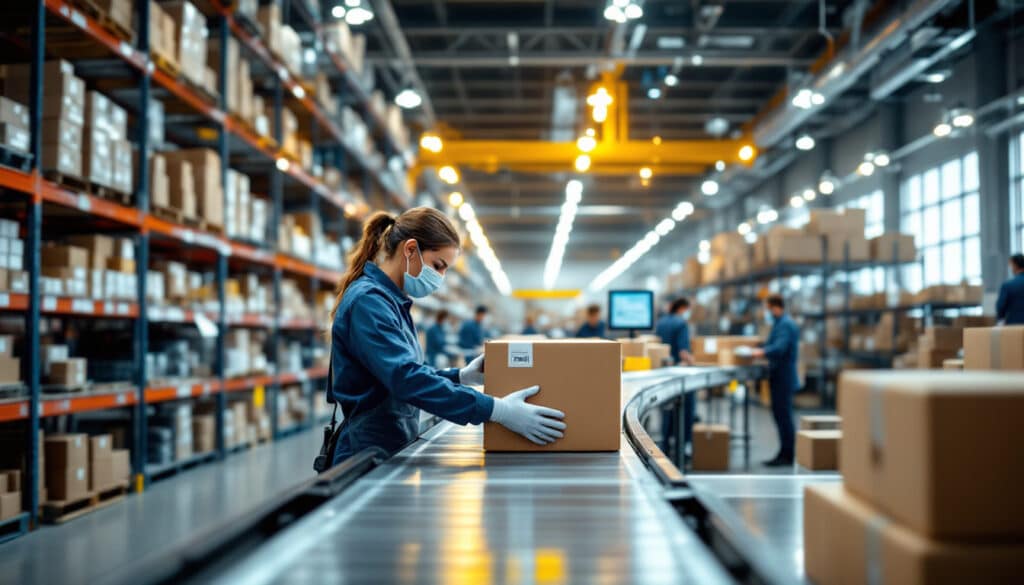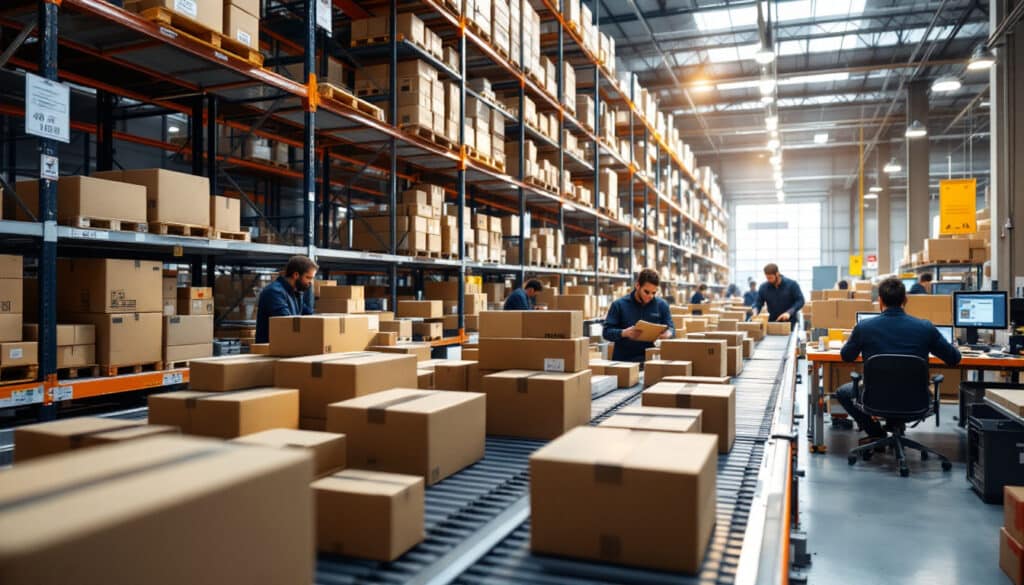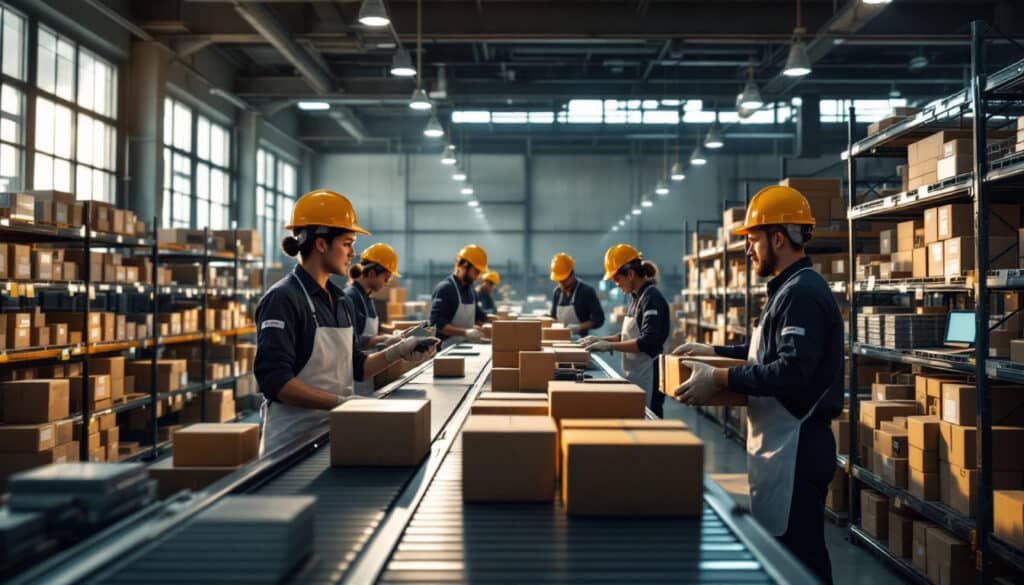Direct-to-Consumer (DTC) order fulfillment has reshaped how brands connect with people. As more shoppers skip the middleman and buy straight from the source, the DTC business model’s rapid rise highlights a need for smooth, reliable delivery. Behind every direct sale is a process that needs to be fast and accurate to keep customers happy and encourage repeat business.
Efficient DTC order fulfillment does more than just get packages out the door—it builds trust and sets brands apart in crowded markets. For growing DTC brands, getting this process right isn’t just helpful—it’s a real factor in long-term success and customer loyalty. In this guide, you’ll learn why the fulfillment experience matters for every DTC brand and what steps can help you meet, and exceed, buyer expectations.
What Is Direct-to-Consumer (DTC) Order Fulfillment?
Direct-to-Consumer (DTC) order fulfillment is the process where brands handle every step of delivering products straight to the people who buy them. Instead of sending inventory to stores or third-party sellers, DTC brands take control from the warehouse shelf all the way to the customer’s doorstep. This approach aims to create a smoother experience, putting brands in charge of everything from packaging to tracking and even handling returns themselves. It works thanks to modern technology, faster shipping options, and tighter control over the entire journey of an order.
Key Components of DTC Order Fulfillment
DTC order fulfillment goes beyond just picking products off a shelf. Brands need a system that keeps the back end running, even as they focus on creating a top-notch buying experience. Here’s how the process usually breaks down:
- Inventory Management: Brands track all available products using inventory software to avoid overselling or running out of stock. Good inventory control reduces delays and surprises for both the brand and the customer.
- Order Processing: Once a customer makes a purchase, order management systems (OMS) immediately log the sale, check inventory, and create packing slips. These platforms often connect to online storefronts, syncing information in real time and cutting mistakes.
- Picking and Packing: Warehouse staff or automated systems locate items for each order. Products are grouped, picked, and then packed carefully—often with branded touches or personal notes that help differentiate the brand.
- Shipping: Orders move straight into shipping. Many DTC brands partner with carriers to offer fast, trackable delivery. Shipping technology can automate label creation, rate comparison, and tracking updates for both the brand and the customer.
- Returns: Easy returns are part of what keeps DTC customers coming back. Brands set up clear policies and platforms for customers to start their own returns. These systems help process refunds quickly and restock returned goods efficiently.
Technology is the backbone for all these steps. Many brands use cloud-based warehouse management systems (WMS) and shopping cart integrations to sync sales channels, inventory, and logistics. With the right tools, tracking thousands of SKUs and delivering accurate information to customers—and staff—becomes manageable. For a deeper look at how technology improves efficiency in warehouse operations, check out this detailed Cloud WMS Comprehensive Guide.
Comparison: DTC vs. Traditional Fulfillment Models
The main difference between Direct-to-Consumer (DTC) order fulfillment and traditional retail fulfillment comes down to who controls the process and how data is used:
- Logistics: In traditional models, brands ship bulk products to retail stores or distributors who then manage delivery to the final shopper. With DTC, brands ship directly from their own warehouse (or a fulfillment partner) to each customer, every time.
- Customer Ownership: DTC brands keep direct relationships with their customers, owning all communication and experience. Traditional fulfillment means the retailer or marketplace controls that last link and gathers the customer feedback.
- Data Access: DTC gives brands access to all customer data, including buying habits, preferences, and shipping details. They can use this info to create better marketing campaigns, track inventory, and craft personalized experiences. Traditional brands surrender much of that data to retailers.
Challenges unique to DTC:
- Handling high order volume with many small shipments.
- Managing real-time inventory across multiple sales channels.
- Living up to fast shipping expectations set by major e-commerce players.
- Setting up customer-friendly (but efficient) returns.
Opportunities for DTC brands:
- Personalized packaging or branded unboxing experiences.
- Direct communication, which builds loyalty and gathers feedback.
- Full control of supply chain, making it easier to adapt to trends.
Brands looking for a full comparison of technology-use in fulfillment might find value in reading about Wave Picking in Warehouse Management, which explores advanced methods for organizing warehouse operations, commonly used in both DTC and traditional fulfillment channels.
Taking ownership of the entire DTC order fulfillment process gives brands a unique edge: they can react quickly to customer needs, try out new marketing strategies, and build direct loyalty that’s tough for traditional retail to match.
Advantages and Challenges of DTC Order Fulfillment
Managing Direct-to-Consumer (DTC) order fulfillment isn’t just about moving boxes from point A to point B. It’s about building a business that’s flexible, responsive, and able to compete alongside giants. While DTC fulfillment opens doors for personalized service and brand growth, it also comes with real-world hurdles—from inventory headaches to handling a storm of returns. Here’s a clear look at both the upsides and issues brands need to weigh.
Benefits: Enhanced Customer Experience and Control
Direct-to-Consumer (DTC) order fulfillment hands brands the keys to their customer journey. Instead of handing off shopping experiences to third parties, brands shape every moment of interaction.
Here’s why this is a winning play for many brands:
- Consistent brand experience: Every step, from packaging to shipping emails, reflects your identity. You control details like custom boxes and thank-you cards, helping your brand stay memorable.
- Stronger customer relationships: By serving shoppers directly, brands get to know their customers on a first-name basis. It’s more than just a transaction—it’s a relationship.
- Personalization at scale: DTC makes it easier to customize packaging, add handwritten notes, or offer special discounts for repeat buyers. These tailored touches drive loyalty and word-of-mouth recommendations.
- Full access to data: What products are trending? How often do customers reorder? Direct access to website analytics and purchase data lets you spot patterns, target ads better, and create promotions that actually work.
- Greater control over service and speed: You set the standards for how fast products ship and how quickly customers get updates. That means fewer surprises and more satisfied buyers.
By keeping everything under your roof, you can adapt quickly when buyer needs shift or new trends pop up. For tips on boosting warehouse organization and fulfillment speed, you can review our practical guide to using batch picking to speed up order fulfillment.
Operational Challenges in DTC Fulfillment
There’s no hiding from the tough side of Direct-to-Consumer (DTC) order fulfillment. While control is a huge benefit, it comes with real responsibility—and costs.
Here’s what you’re up against:
- Rising operational costs: Shipping small parcels to individual homes racks up higher costs per order compared to bulk retail shipments. Fast shipping, branded packaging, and hassle-free returns add extra expense—especially when meeting customer expectations set by bigger brands.
- Demand forecasting headaches: In retail, you send cases of products to stores, and the rest is out of your hands. With DTC, demand can swing wildly based on marketing campaigns, seasonality, or viral moments. Underestimate, and you miss sales. Overestimate, and you’re stuck with costly overstock.
- Returns and reverse logistics: Customers expect frictionless returns. But handling these one-by-one is tricky. Returns eat into margins, tie up warehouse space, and require dedicated systems to process, restock, or even recycle goods.
- Scalability problems: What works for 100 orders a week can break when you reach 1,000. Scaling DTC means upgrading technology, retraining staff, and constantly reviewing logistics partners.
- Inventory management: Selling across multiple channels—your own site, plus potentially marketplaces—makes real-time inventory tracking a must. A single stockout or oversell can send customers elsewhere.
- Customer service strain: With direct responsibility for every question, complaint, or late package, customer service needs more hands—or smarter automation—as the business grows.
Solving these challenges takes the right mix of automation, smart staff, and strong processes. If you want more ideas for handling warehousing bottlenecks and improving accuracy, explore the principles behind efficient warehouse slotting strategies.
Understanding these benefits and roadblocks helps brands plan smarter and set realistic goals as they scale DTC order fulfillment.
Optimizing the DTC Fulfillment Process
Optimizing Direct-to-Consumer (DTC) order fulfillment is the key to meeting today’s shopper expectations for speed, reliability, and transparency. DTC brands must focus on building a smooth path from product selection to delivery, while keeping costs and mistakes low. Here’s how the best in the business make it happen.
Leveraging Technology and Automation
Technology fuels efficiency in DTC fulfillment operations. The right systems help brands manage inventory, process orders, and ship out packages with fewer errors and less manual work.
- Inventory management systems: These platforms track every product in real time, prevent stockouts, and avoid overselling. Brands can sync sales channels, predict inventory needs, and maintain tight control across multiple locations.
- Order tracking software: Today’s shoppers expect to know where their package is at every step. Automated notifications and detailed tracking reduce support tickets and boost peace of mind for customers.
- Warehouse robotics and automation: Smart technology now handles many repetitive tasks, including picking and packing. By using robotics or automated conveyor belts, brands speed up order fulfillment and reduce mistakes. This also frees up human staff for quality checks and complex orders.
Some growing DTC brands turn to third-party logistics partners to scale up without building out their own warehouse tech. For a clear understanding of how this works, check out the comprehensive guide to 3PL solutions, which explains how warehouse management systems and outsourced fulfillment can support DTC growth.
Improving Logistics and Last-Mile Delivery
Fast, reliable delivery keeps customers coming back. Improving last-mile delivery—getting packages from the warehouse to the customer’s door—requires both smart planning and a focus on customer experience.
Best practices include:
- Strategic warehouse placement: Locate fulfillment centers close to major customer hubs. This reduces shipping times and can cut costs.
- Carrier partnerships: Build strong relationships with multiple shipping carriers. This allows you to compare rates, optimize routes, and always choose the fastest or most affordable option, even during busy seasons.
- Real-time delivery updates: Keep customers updated through every stage of delivery with automated text or email alerts. Transparency builds trust and reduces “where’s my order?” headaches.
- Flexible delivery options: Offer choices like same-day, next-day, or scheduled delivery windows when possible. Meeting different customer needs can set your brand apart.
- Proactive management of failed deliveries: Use data to spot problem areas, automate follow-ups with customers, and streamline re-delivery to minimize delays and costs.
Finding the right fulfillment partner can also transform your last-mile performance. For practical tips on how to select the best fulfillment service for your DTC brand, review guidance on what to look for in a third-party provider, including scaling support and tech integrations.
A few small changes—upgraded technology, better carrier choices, a little automation—can dramatically improve DTC customer satisfaction and repeat sales. These optimizations don’t just make fulfillment faster; they help your brand keep its promises.
Best Practices and Trends in DTC Order Fulfillment
Direct-to-Consumer (DTC) order fulfillment is always shifting. What worked last year may not land with customers today. Brands that pay attention to both changing expectations and new tech keep their edge. Many shoppers look beyond speed alone and want clarity on sustainability and personal touches they can’t get elsewhere. By focusing on smarter packaging and tech-driven fulfillment, brands can turn routine deliveries into memorable moments that build loyalty and trust.
Sustainability and Eco-Friendly Packaging
Sustainable practices aren’t just a trend—they’re a customer demand. Many shoppers choose brands based on how they handle the planet. Eco-friendly packaging and green fulfillment methods help brands meet this need without cutting corners on quality or speed.
Why it matters:
- More buyers prefer brands that use recycled materials and show a clear effort to reduce waste.
- Shipping materials, like cardboard and plastic, add up fast in DTC. Smarter choices lower both your carbon footprint and landfill waste.
Best ways to make sustainable packaging work:
- Choose recyclable or compostable materials for all packages. Many brands now use corrugated cardboard, paper tape, or bioplastics.
- Downsize packaging. Smaller boxes or right-sized mailers mean less wasted space and lower shipping costs. This step also reduces the need for excess packing fillers.
- Encourage customers to recycle. Clear instructions inside the box help customers reuse or recycle each part of the package.
- Show your sustainability story on the box and your website, so shoppers know the impact of their choices.
Many modern DTC brands now see eco-friendly choices as not just good for the planet, but also key for winning repeat buyers. For more ideas on how fulfillment centers can use automation to make packing and shipping greener, check out this guide on using warehouse automation for better efficiency.
Future Trends: AI, Data Analytics, and Personalization
Tech keeps raising the bar for Direct-to-Consumer (DTC) order fulfillment. New tools don’t just speed up the process—they also help brands get to know their customers better, cut errors, and deliver unique experiences.
AI and data are getting smarter:
- AI predicts inventory needs. It quickly sorts through data, spotting which products will sell fast or slow. This cuts waste and avoids overstock.
- Automated picking and packing means faster, more accurate orders. Bots and smart machines handle repeat tasks, while staff tackle special touches or custom kits.
- Data analytics highlight trends in customer behavior, helping brands offer focused promotions and launch new items at just the right time.
Personalization sets DTC apart:
- Brands use tech to add custom touches to every order—think customer names on packing slips or tailored product samples.
- AI-driven recommendations let retailers suggest the next best product, packing every order with a bit more value for each buyer.
- Some DTC brands even offer subscription models tweaked to past behavior, turning first-time buyers into loyal fans.
Staying ahead in DTC means always looking for the next upgrade, whether it’s a smarter algorithm or packaging that reduces your environmental footprint. For a closer look at how DTC brands are blending automation with smart data to boost fulfillment, visit this feature on warehouse robotics in e-commerce fulfillment.
Keeping up with these trends helps DTC brands do more than just survive—they create moments that stick with customers long after the package arrives.
Conclusion
Direct-to-Consumer (DTC) order fulfillment keeps shifting as shopper demands and new technology shape the way brands deliver products. The most successful brands keep things simple: accurate inventory, faster shipping, clear communication, and smart use of automation.
Adopting best practices—like updating your warehouse tech or shrinking your packaging waste—helps turn every order into a chance to build loyalty. Growth comes from acting on what works, not just following trends. Staying curious about the next step, whether it’s a better inventory system or smarter batch order processing, puts your brand in a stronger position.
DTC fulfillment is more than sending boxes—it’s about delivering a promise straight to the customer. Keep learning, stay flexible, and always aim for an experience that buyers remember for the right reasons. Thanks for reading, and feel free to share your own fulfillment tips or stories with us.
![Understanding Direct-to-Consumer (DTC) Order Fulfillment: Key Steps, Benefits, and Trends [2025 Guide]](https://leanafy.com/wp-content/uploads/2025/05/dtc-ecommerce-warehouse-fulfillment-automation.jpg)



